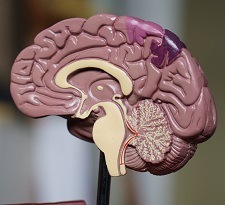 A study by the Neiman Health Policy Institute (Reston, USA) has found that the costs of an ischaemic stroke episode increased by 4.9% from 2012 to 2019, with the main driver of this being changes in treatments—such as endovascular therapy (EVT) and intravenous thrombolysis (IVT)—as opposed to increases in various types of neuroimaging, which were not deemed to have been key cost drivers.
A study by the Neiman Health Policy Institute (Reston, USA) has found that the costs of an ischaemic stroke episode increased by 4.9% from 2012 to 2019, with the main driver of this being changes in treatments—such as endovascular therapy (EVT) and intravenous thrombolysis (IVT)—as opposed to increases in various types of neuroimaging, which were not deemed to have been key cost drivers.
Over the study period, the share of episodes with treatment increased by 155%, rising from 7.3% to 18.5%. There were increases of 80% and 476% in the number of episodes with IVT-only, or EVT with or without IVT, respectively. IVT-only remained the most common treatment, although its treatment share declined from 81.1% of episodes with treatment in 2012 to 57.2% in 2019.
“Despite these substantially higher treatment rates, median costs remarkably only increased 4.9% in inflation adjusted dollars” said Eric Christensen, director of Economics and Health Services Research at the Neiman Institute. “If the treatment rate had remained at 2012 levels, the estimated costs would have decreased 6.8% between 2012 and 2019, all else equal.”
During the study period of 2012–2019, median hospital length of stay dropped from five days to four days—and while-in-hospital mortality rates fell from 6.3% to 4.1%.
These improved outcomes also reduced overall costs for each episode, offsetting some of the increase in treatment cost. The study of 75,525 patients with ischaemic stroke used the Medicare 5% Research Identifiable Files (2012–2019) from the Centers for Medicare and Medicaid Services (CMS).
“To our knowledge, no study has examined the relative contribution of treatment and neuroimaging on ischaemic stroke hospital costs over the period in which consensus statements, recommendations and guidelines changed for stroke treatment,” said lead researcher Pina Sanelli (Donald and Barbara Zucker School of Medicine at Hofstra/Northwell, Uniondale, USA). “Hence, our objective was to examine the association of treatment and neuroimaging with ischaemic stroke total hospital cost growth for the Medicare fee-for-service population.”
The five most significant predictors of higher episode costs were treatment with EVT; longer hospital stays; arrival by transfer; severe stroke; and treatment with IVT. The results do not support the notion that imaging was a primary hospital cost driver between 2012 and 2019, the researchers claim.
“Fortunately, given the improvements in stroke treatment and the associated reductions in post-treatment costs that muted cost growth that we observed, it appears stroke cost growth between 2012 and 2030 may be less than projected,” said Elizabeth Rula, executive director of the Neiman Institute.










